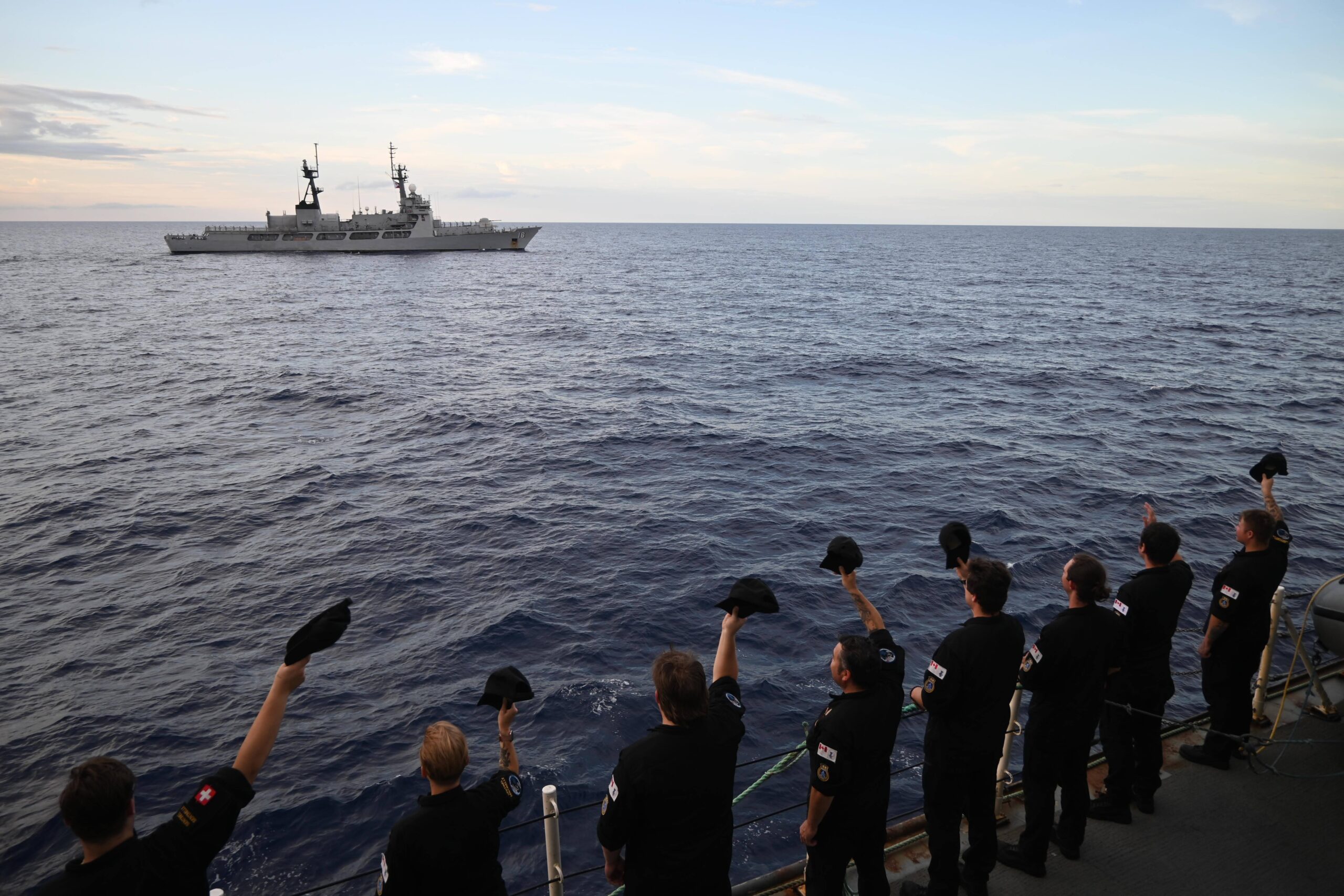Thought that was a different project, at least initially? IIRC the very earliest LCS (before it even got the name) concepts were more akin to an updated WWII destroyer or punchier OPV; good endurance, lots of guns, reasonable turn of speed, not particularly large; and the expected use seemed to boil down to gunboat work: giving pirates and other localized problems a kicking, and supporting forces ashore with the same goal, without having to send a Burke to muck around in coastal and river waters. Could be entirely wrong.
If you take a look at the specs of the JHSV and the LCS Freedom
The
Independence class is a
class of
littoral combat ships built for the
United States Navy.
The hull design evolved from a project at
Austal to design a high speed, 40-knot-cruise ship. That hull design evolved into the high-speed
trimaran ferry
HSC Benchijigua Express and the
Independence class was then proposed by
General Dynamics and Austal as a contender for Navy plans to build a fleet of smaller, agile, multipurpose warships to operate nearshore in the
littoral zone.
Planning for a class of smaller, agile, multipurpose warships to operate in the littoral zone began in the early 2000s. In July 2003, a proposal by General Dynamics (partnering with Austal USA, the American subsidiary of Australian shipbuilder Austal) was approved by the Navy, with a contract for two vessels.
On 15 April 2003, the Lockheed Martin LCS team unveiled their Sea Blade concept based on the hull form of the motor yacht
Destriero
The construction contract was awarded to Lockheed Martin's LCS team (Lockheed Martin, Gibbs & Cox, Marinette Marine, Bollinger Shipyards) in May 2004 for two vessels. These would then be compared to two ships built by Austal USA to determine which design would be taken up by the Navy for a production run of up to fifty-five ships.
The way I always understood the development was that small, high-speed vessels had already demonstrated their viability commercially. The Marines were enamoured of what they saw with the WestPac Express and with the Aussie's successful use of a similar ferry in East Timor (HMAS Jervis Bay).
Even 20 years ago the Marines were looking for landing ships for smaller formed units.
To accompany the littoral ferries there was a need for a littoral escort. Austal proposed an armed version of their ferries. The USN took interest and assigned a budget. Lockheed decided to compete for the budget with a design that appealed to the blue water ASW crowd, promising a 40 knot frigate.
ASW in the littoral is a specialized occupation requiring different skills and kit than than blue water ops., as I understand it.
....
Modularity apparently doesn't work for the US Navy despite the concept being successfully applied by the Danes for almost 50 years now with the modules being employed on vessels from 320 tonne Flyvefisken patrol boats to 6600 tonne Absalons and Huitfelds. Not the first time that the US has been unable to exploit capabilities employed by others.
The Austal designs were all ferry designs, which like container ships, were designed to manage variable loads in various positions. Stanflex modules came out of Odense in Denmark which designed RoRo ships and Container ships for Maersk before being tasked with building the Absalon, essentially an armed RoRo ferry into which a number of Stanflex modules could be slotted. The Huitfelds, now the Type 31s of the RN, were the same RoRo ferry as the Absalon but with a defined load and more engine power. OMT, the design team, is still, I believe part of the Irving CSC team.
....
My conclusion, having watched the programme over the decades is that the USN doesn't want anything to do with any operations other than blue water operations. Green, brown, riverine, littoral, ... none of those are going to be willingly supported by the USN. Just like the USAF will not willingly support Tactical Air. Even the Joint (ie Army included) High Speed Vessels were transferred entirely to the Navy and then turned over to the civil mariners of the Military Sealift Command and re-designated as EPFs (Expeditionary Fast Transports).
Curiously the civilian manned ships only require 26 crew instead of the military crew of 46.
Although designed for a military crew of 46, the ships usually have a crew of 26.
The EPF program combines the Army's Theater Support Vessel (TSV) program, dating from 2004, with the Navy and Marine Corps High Speed Connector (HSC), requirement dating from 2004.

en.wikipedia.org
....
The EPF/JHSV/TSV/HSC programme was always concurrent with the LCS programme and the Aussies and their Cats were always the lead design.
....
Twenty years on and the USN and the USMC are still dickering over shallow draft landing ships.




